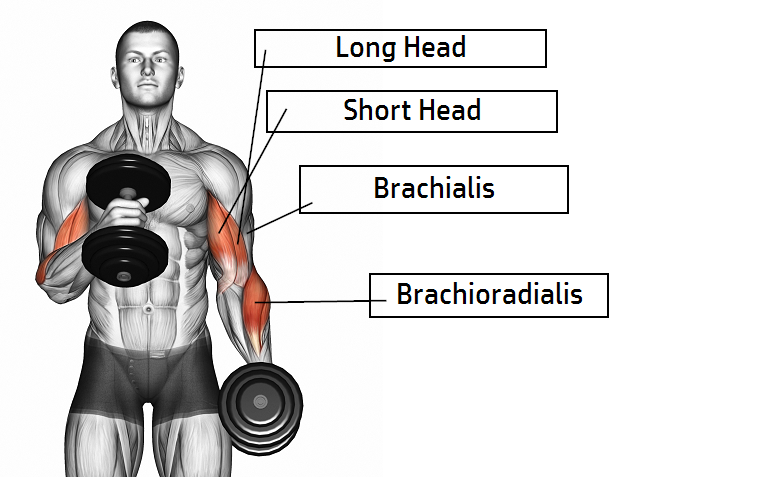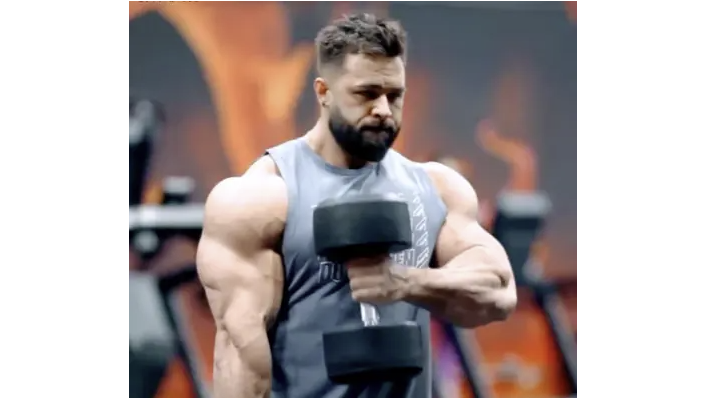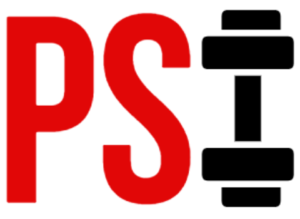Even if you don’t know it by name, you’ve probably seen someone do a hammer curl before. It’s one of the most popular arm exercises, but there’s more to it than meets the eye. A hammer curl doesn’t just work your biceps—it also engages multiple other muscles in your arms and that are often overlooked.
But knowing which muscles are worked isn’t enough. To get the most out of your workout routine, you need to understand how to add variation, intensity, and challenge to maximize your results. That’s where this article comes in—we’ll take a detailed look at the muscle groups involved and give you some tips on how to make sure each and every rep counts. So if you’re ready to master the perfect hammer curl, let’s get started!
What Muscles Are Worked With a Hammer Curl?
The hammer curl is a great exercise for working the entire upper arm. It specifically targets the long head of the biceps, brachialis and brachioradialis. This exercise is especially beneficial if you’re looking to build impressive biceps and forearms.
During a hammer curl, several muscles in the upper arm and forearm are engaged. The primary muscles worked include:
- Biceps Brachii: The biceps brachii is the primary muscle responsible for flexing the elbow. In a hammer curl, the biceps brachii is engaged, but with less emphasis compared to a traditional bicep curl due to the neutral grip.
- Brachioradialis: This forearm muscle is located on the outer part of the forearm, running from the upper arm to the wrist. The brachioradialis plays a significant role in the hammer curl, helping to flex the elbow and stabilize the wrist.
- Brachialis: The brachialis muscle is an often-overlooked muscle that lies underneath the biceps brachii. It aids in elbow flexion and gets significantly engaged during hammer curls due to the neutral grip position.

In addition to these primary muscles, hammer curls also involve some secondary muscles, which provide stability and support during the movement:
- Forearm Flexors: The forearm flexor muscles are responsible for wrist flexion and grip strength. They are engaged during hammer curls to maintain a firm grip on the weights.
- Deltoids (Anterior): The front part of the deltoid muscles in the shoulder assists in stabilizing the arm and shoulder joint during the exercise.
- Core Muscles: The muscles in your core, including the rectus abdominis, obliques, and erector spinae, help maintain proper posture and provide stability during the hammer curl movement.
In summary, hammer curls work several muscles, primarily the biceps brachii, brachioradialis, and brachialis, while engaging secondary muscles to support the movement.
Doing hammer curls will lead to greater muscle growth in the biceps and forearms and could also add some size to your delts too.
Benefits of Hammer Curls
Hammer curls offer several benefits for individuals looking to improve their overall fitness and arm strength. Some key benefits include:
Balanced Arm Development:
Hammer curls promote well-rounded arm development by targeting not only the biceps brachii but also the brachioradialis and brachialis muscles. This exercise helps improve muscle balance and symmetry in the arms.
Improved Grip Strength:
The neutral grip position used in hammer curls engages the forearm muscles, particularly the brachioradialis and the forearm flexors. This results in improved grip strength, which can be beneficial in daily activities, as well as other exercises and sports.
Reduced Strain on Wrists:
The neutral grip used in hammer curls places less strain on the wrists compared to supinated grip curls. This can make hammer curls a more comfortable option for individuals with wrist issues, while still effectively targeting the arm muscles.
Enhanced Functional Strength:
Hammer curls can improve functional strength, as the neutral grip and the involvement of multiple muscles in the movement better mimic many real-world lifting and carrying tasks.
Variety and Muscle Stimulation:
Incorporating hammer curls into your workout routine adds variety, which helps prevent boredom and training plateaus. Different exercises stimulate muscles in various ways, so adding hammer curls can lead to increased overall arm strength and development.
Improved Stability and Core Engagement:
Hammer curls engage the core muscles and shoulder stabilizers, helping you maintain proper posture and form during the exercise. This helps develop a strong core and better overall stability.
In summary, hammer curls offer numerous benefits, including balanced arm development, enhanced grip strength, reduced wrist strain, improved functional strength, increased variety in workouts, and improved core stability.
For even more info on hammer curl benefits, check out the Ultimate Guide to Hammer Curls
How to do Hammer Curls
When doing hammer curls, it is important to keep your elbows in a fixed position, as this isolates the biceps and prevents momentum from taking over. This means you will have to lift lighter weight if you are unable to keep your elbows in a fixed position.
To perform hammer curls, follow these step-by-step instructions:
- Stand upright with your feet shoulder-width apart, maintaining a slight bend in your knees to support your lower back.
- Hold a dumbbell in each hand with a neutral grip (palms facing your thighs). Keep your arms fully extended at your sides.
- Engage your core and maintain a straight back throughout the exercise.
- Slowly bend your elbows and lift the dumbbells towards your shoulders, keeping your palms facing inward and your elbows close to your body. Your upper arms should remain stationary during this movement.
- Pause at the top of the curl for a moment, squeezing your biceps and forearm muscles.
- Slowly lower the dumbbells back to the starting position, maintaining control and resisting the urge to let gravity do the work.
- Repeat the movement for the desired number of repetitions.
Tips for Proper Form:
- Avoid using momentum to lift the weights. Swing or abrupt jerking movements can lead to injury and reduce the effectiveness of the exercise.
- Keep your wrists straight and stable throughout the movement. Avoid bending or flexing the wrists.
- Focus on slow, controlled movement, both during the lifting and lowering phases.
- Breathe in as you lower the dumbbells and exhale as you curl them up to your shoulders.
By following these instructions and tips, you can effectively perform hammer curls and enjoy the benefits they offer for your arm strength and overall fitness.
Remember to focus on proper form: keeping that elbow stationary throughout the movement and feeling that contraction in the biceps as you move up and down from the curl position—that’s when the real work begins!

Tips to Get the Most Out of Your Hammer Curls
To get the most muscle activation while performing hammer curls, consider the following tips:
- Focus on Muscle-Mind Connection: Pay attention to the muscles you’re working during the exercise. Visualize your biceps, brachialis, and brachioradialis contracting and relaxing as you curl and lower the dumbbells. This mental focus can help increase muscle activation.
- Use Proper Form: Maintain proper form by keeping your elbows close to your body, your wrists straight, your core engaged, and your back straight. Good form ensures you target the intended muscles and reduces the risk of injury.
- Control the Movement: Avoid using momentum or swinging the weights. Perform slow, controlled curls, with a 2-3 seconds tempo for both lifting and lowering the dumbbells. This controlled movement increases muscle activation by maintaining tension throughout the exercise.
- Squeeze at the Top: When you reach the top of the curl, pause for a moment and consciously squeeze your biceps, brachialis, and brachioradialis muscles. This extra contraction can enhance muscle activation and growth.
- Gradually Increase Weight: Use a challenging weight that allows you to perform the desired number of repetitions with proper form. As you become stronger, progressively increase the weight to continue challenging your muscles and promoting growth.
- Use Full Range of Motion: Complete each curl using a full range of motion, fully extending your arms at the bottom of the movement and curling the dumbbells up to your shoulders. This ensures maximum muscle activation and prevents muscle imbalances.
- Vary Repetitions and Intensity: Mix up your workout routine by occasionally changing the number of repetitions, the weight used, or the intensity of your hammer curls. This variety can help stimulate muscle growth and prevent plateaus.
- Warm-up and Stretch: Always warm up before exercising to increase blood flow to the muscles and improve flexibility. Stretch your arm muscles after your workout to help prevent injury and improve recovery.
By incorporating these tips into your hammer curl routine, you can maximize muscle activation and enjoy the full benefits of this effective arm exercise.
Variations on the Hammer Curl to Challenge Your Muscles Further
We all know the hammer curl helps work your biceps, but do you know there are variations on the exercise that can up the intensity even further? Adding new variations of the hammer curl to your routine can help you avoid plateaus, while at the same time challenge your muscles in new ways.
Some of these variation exercises are great for isolating biceps muscles as well as providing a good stretch. Incorporating different curl exercises into any strength training routine can activate your biceps, but some of these hammer curl alternatives can provide much more intense brachial muscle stimulation.
Let’s take a look at some of those variations:
- Standing Hammer Curl: This variation is ideal for engaging the core and challenging total body stability. It also adds an element of balance to the movement and allows for a greater range of motion.
- Cable Hammer Curl: Incorporating cables into the exercise allows for consistent tension throughout every repetition, which leads to more defined arms. This variation also adds more range of motion through each rep due to its dynamic nature.
- Cross-Body Hammer Curl: This variation works your shoulder and elbow joints through an entirely different range than normal hammer curls and targets muscles differently due to its unique positioning.
Variations on the hammer curl—like these or others—can be beneficial when used as part of an overall resistance training program, especially if you want to target those stubborn bicep muscles!
Here are some more ideas from John Meadows:
Incorporating Hammer Curls Into Your Routine
Incorporating hammer curls into your regular routine offers a lot of benefits. You’ll be building size and strength in your biceps, improving your wrist stability and grip strength, and even adding more control to other arm exercises like the traditional curl or tricep extension.
Here are some tips on getting the most out of this exercise:
- Start with a light weight and do higher reps: Hammer curls help you develop muscle control and coordination, so start by using a light weight and doing higher reps (12-15 per set). This will allow you to focus on proper form without stressing your body out.
- Increase weight slowly over time: As you become more comfortable with the exercise, you can add more weight to up the intensity. Start with small increments—smaller than you’d normally use for other arm exercises—so that you can make sure your form is still good as you increase the resistance.
- Alternate between both arms: To keep things balanced, alternate between both arms when doing hammer curls. This helps ensure that each arm gets the same amount of work, making sure one arm doesn’t become too dominant in the movement.
With these tips in mind, you can make sure that hammer curls are an effective part of your workout routine!
Conclusion
Hammer curls are an incredibly effective exercise for targeting and strengthening the biceps, and when done correctly, can reap great rewards for your upper body strength and physique.
In order to ensure that you are doing hammer curls correctly, pay attention to your form, move with a slow and steady tempo, and use correct posture and breathing techniques. If done correctly, hammer curls can help you achieve greater bicep strength and size.
Remember that the key to a successful workout is consistency and diligence, and hammer curls are no exception. With that in mind, practice your hammer curls often and push yourself to your limits in order to achieve the best results.

